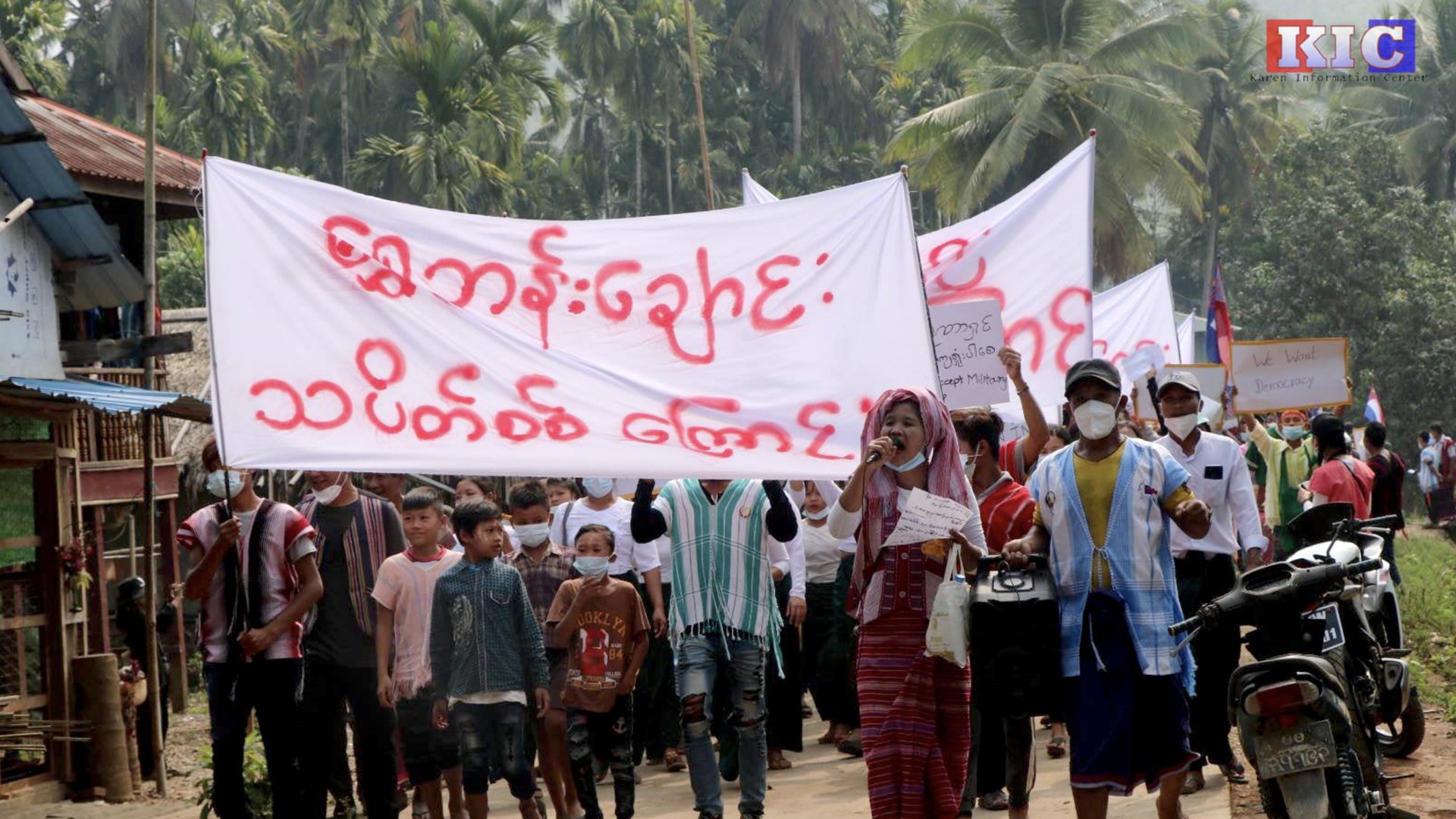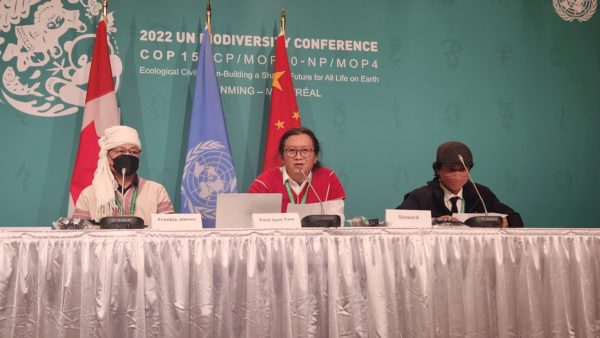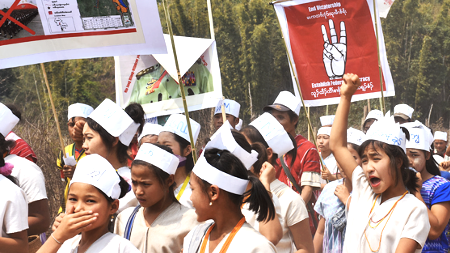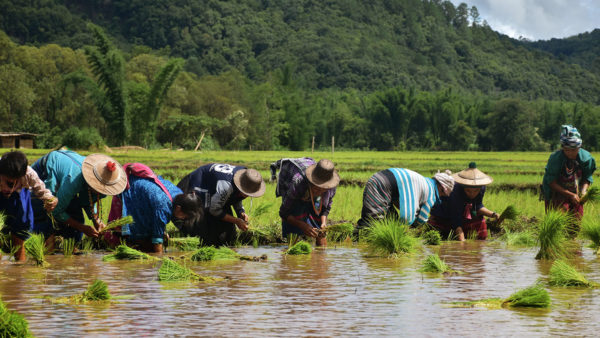Forests in Indigenous territories in Myanmar face an uncertain future. The military has targeted environmental defenders for their work protecting their lands from theft and destruction by military-run companies and their cronies
First published on 03/05/2023, and last updated on 11/09/2023
By Esther Wah (Karen), Secretary, All Burma Indigenous Peoples Alliance (ABIPA)
Note: This article is from the recently published report “Celebrating Territories of Life in Southeast Asia.” The text has been edited for the ICCA Consortium website.
Tanintharyi Region, my homeland in southern Myanmar, is home to a rich expanse of rainforest, ocean, and mangroves, where we still have wild tigers and elephants and where the forest provides us with everything that we need. Our Indigenous communities depend on the forest for food, water, and medicine, and our forests depend on Indigenous communities, who manage, conserve and protect them with great care. Over the past decade, our communities have worked hard to defend our lands so that future generations will be able to inherit forests and biodiversity.
On the first day of February 2021, the military took back power, violently oppressing our people again. We fear that we have lost all progress, and we no longer know how we can manage our forests and protect our futures. We, Indigenous People across Myanmar, call for solidarity from Indigenous Peoples worldwide as we plan to fight to protect our forests, conserve our lands, and win back our lives.
As well as being a rich, green land, our communities have been terrorized and traumatized by decades of armed conflict and militarization at the hands of the military. In 1948, our Karen people began our fight for greater autonomy, self-determination, and fundamental rights against the fascist oppression of the Myanmar military. This resulted in a long and brutal civil war in which villages were burnt down, our people were killed, raped, and tortured, and hundreds of thousands of people were displaced in the forest and along the Thai-Myanmar border. Relentless oppression of our people meant that we never had a chance to develop, forge our destiny, to manage and protect our territory. This has been our long-term struggle.
In 2012, the Karen National Liberation Army (KNLA) and the Myanmar military signed a ceasefire agreement, bringing to a halt nearly seventy years of brutal civil war in our territory. During this time of relative peace, communities were able to re-establish their livelihoods, manage and protect their lands and forests, participate in political processes, and live and breathe without the fear of being shot, abducted, or tortured. We were able to mobilize our communities, develop new institutions, and create new ideas for a collective and peaceful future.
While the ceasefire stopped the bullets flying and the soldiers destroying our villages, we experienced new challenges. Discriminatory land laws such as the Vacant, Fallow, and Virgin Lands Management Law (VFV Law) made farmers and Indigenous Peoples criminals on their lands while opening up their territories to large-scale projects that would plunder forests and destroy biodiversity. In Tanintharyi, 1.7 million acres of land were handed to crony companies for oil palm concessions, 3.5 million acres were earmarked for the Ridge to Reef project, a large-scale conservation program funded by the GEF, and other parts of our region were taken for special economic zones, infrastructure development, and mining operations. For us, it felt like the rug was being pulled from under our feet – we had nowhere to run.
In response to these new challenges, Indigenous communities and civil society organizations started creating their conservation areas, proving their ability to protect and conserve their territories. Communities across the region mobilized, strengthened their local institutions, and documented their boundaries and land use systems. We traveled across the country to show policymakers how we govern our territories and demand our rights to have our territories recognized, supported, and respected. We built networks with Indigenous communities throughout the country, creating new spaces of inter-ethnic solidarity, and started to join international platforms with other Indigenous activists from across the globe. We campaigned against mega projects with great success – our campaigns halted mining operations, suspended palm oil concessions, and canceled conservation projects that did not include us. We knew that united – we could win.
Together with my community, we developed new visions for what our territory should look like. We brought communities together from territories across the region, each learning from the other and working together to make our dream our reality. We developed a grassroots alternative to the Ridge to Reef Project, a Landscape of Life that proved that communities were best placed to protect and conserve our territory and that a peaceful future would include harmony between our Karen people and their forests and biodiversity.
With the recent military takeover, however, our lives were thrown into uncertainty. The military staged a coup, arresting members of the elected National League for Democracy (NLD) government and brutally cracking down on resistance. Over 1,300 people have been killed, over 8,000 have been detained or arrested, and the military has started brutal campaigns in ethnic areas once more – dropping bombs on our forests and burning down our villages.
Forests in Indigenous territories also face an uncertain future. The military has targeted environmental defenders for the work that they have done protecting their lands from theft and destruction by military companies and their cronies. Recently, Kyaw Min Htut, a forest defender from the Sagaing region, was arrested and beaten because of his role in organizing his community and protecting surrounding natural resources. In Tanintharyi, the offices of many environmental organizations have been raided, and many environmental defenders have had to flee, hiding from arrest or murder at the hands of the junta. Defending forests and the environment in Myanmar in 2021 is a crime punishable by death.
“Without forests, we cannot survive, and without us, our forests cannot survive.”
Despite attacks by the military and decades of destructive development, we still have a lot of forest under our Indigenous territories. Without forests, we cannot survive, and without us, our forests cannot survive. We stand at the forefront of the fight against climate change. Attacks by the military on Indigenous Peoples and environmental defenders mean that the protection of the forests is at risk – and for this reason, we want to say to the world: this coup doesn’t just affect our country, but the world as a whole.
Since the coup, our divided nation has become united. We have united in revolution against the military, which has stolen our futures from us. We stand together to change the path of history, and until the end of the world, we will not give up our efforts. Over 400,000 workers have joined the civil disobedience movement, youth from across the country have joined the armed resistance, and ethnic armed groups continue the struggle to defend their territories. Together, we cannot and MUST NOT lose.
While our struggle has disappeared from international headlines, we call upon Indigenous communities and organizations across the globe to stand in solidarity with us and help us to raise our voice – the world depends upon it. If we do not speak out and leave things as they are, our futures will be lost, and our forests will be destroyed. Until the end of the world, we will not let that happen.



